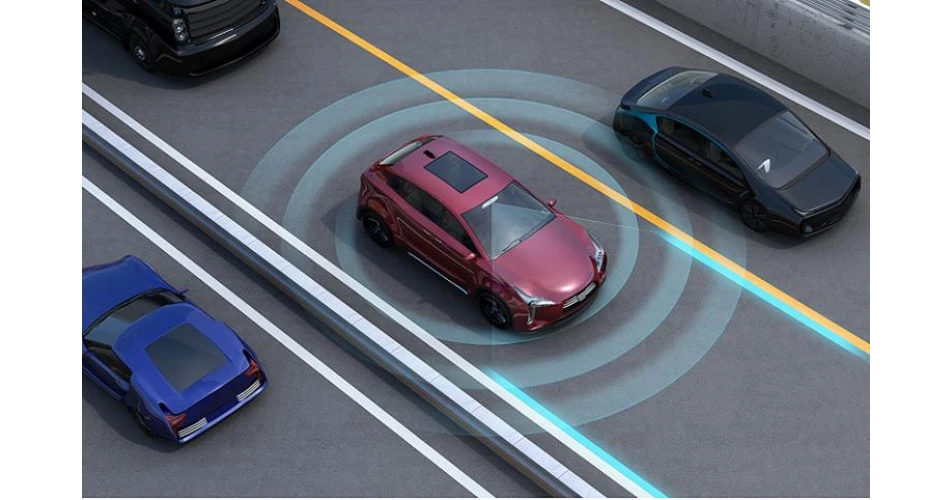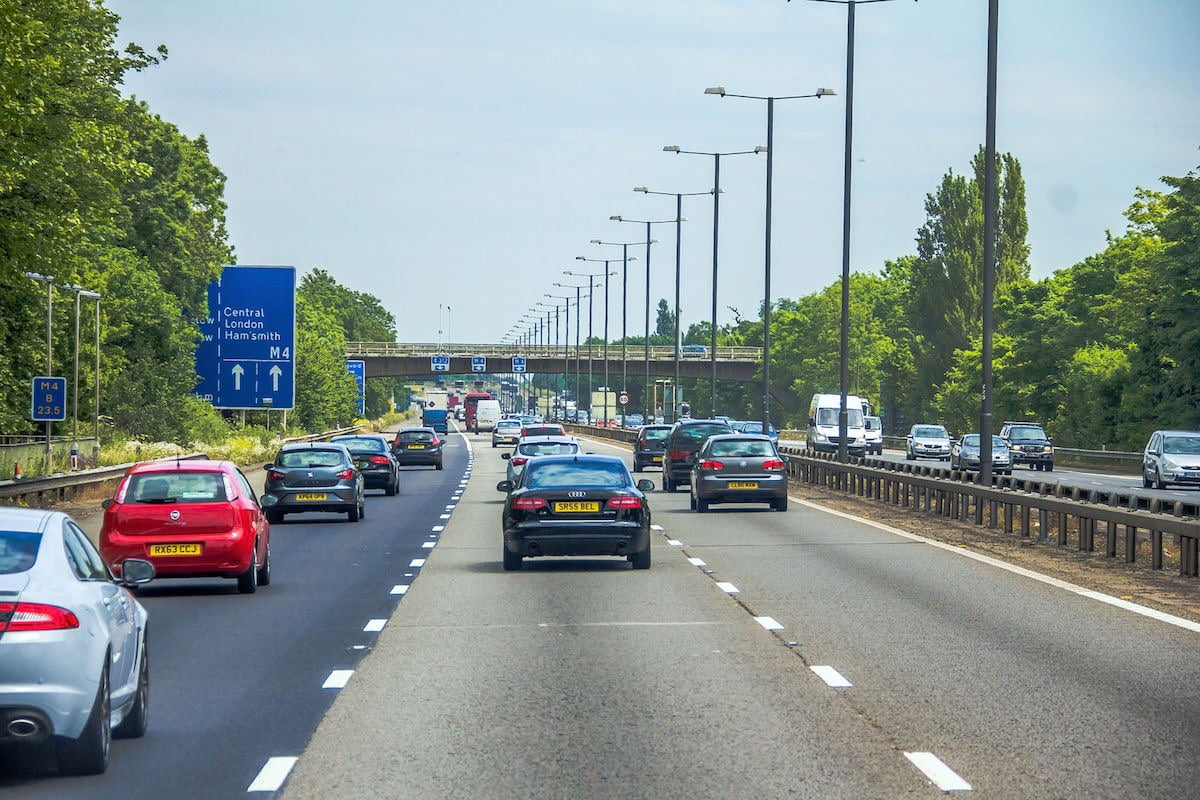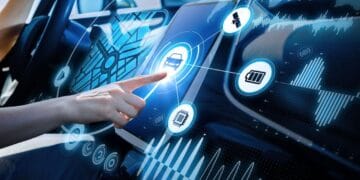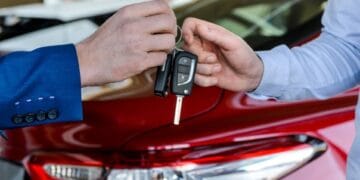The Unwavering Commitment to Safety

For over a century, the primary goal of automotive safety has been to protect occupants in a crash. Early innovations focused on passive safety: seatbelts, crumple zones, and airbags. While these remain critical, the paradigm has shifted dramatically. The focus in 2025 is increasingly on active safety—systems designed to prevent accidents from happening in the first place, or to mitigate their severity before impact. This proactive approach is leading to a future where cars aren’t just designed to survive crashes, but to actively avoid them.
The excitement surrounding automotive safety innovations isn’t about flashy features; it’s about the tangible difference they make in saving lives and preventing debilitating injuries. Imagine a car that can see dangers you might miss, react faster than humanly possible, and even take evasive action to avoid a collision. For families, this means greater peace of mind on every journey. For the public, it translates to safer roads for everyone, including pedestrians and cyclists. For governments, these innovations are crucial tools for reducing traffic fatalities and associated healthcare burdens. This convergence of advanced technology, ethical responsibility, and the desire for universal protection ensures that safety remains the ultimate luxury and a driving force in automotive progress.
The Evolution of Automotive Safety
Automotive safety has progressed through distinct phases, each building upon the last to create increasingly protective vehicles:
A. Passive Safety (Before the Crash):
A. Crumple Zones (Deformable Structures): Designed to absorb and dissipate crash energy by deforming in a controlled manner, preventing it from reaching the passenger compartment. This includes front, rear, and side crumple zones.
B. Safety Cells (Rigid Passenger Compartment): The core structure of the vehicle built with high-strength steel and advanced alloys to resist deformation and protect occupants during an impact.
C. Seatbelts and Pre-tensioners: The most fundamental safety device. Pre-tensioners tighten the seatbelt instantly during a collision to hold occupants firmly in place, reducing forward movement. Force limiters then allow controlled payout to manage loads on the body.
D. Airbags: Supplemental Restraint Systems (SRS) that rapidly inflate to cushion occupants during a collision, preventing contact with hard interior surfaces. This includes front, side, curtain, and even knee or central airbags.
E. Energy-Absorbing Steering Columns: Designed to collapse during a frontal impact to reduce injury to the driver.
F. Laminated Safety Glass: Windshields designed to stay largely intact upon impact, preventing shards from entering the cabin.
B. Active Safety (Preventing or Mitigating the Crash):
A. Anti-lock Braking System (ABS): Prevents wheels from locking up during hard braking, allowing the driver to maintain steering control.
B. Traction Control System (TCS): Prevents wheelspin during acceleration, maintaining traction on slippery surfaces.
C. Electronic Stability Control (ESC): Uses sensors to detect loss of control (skidding or oversteering) and applies individual brakes or reduces engine power to help the driver regain control. Mandated in many countries due to its proven effectiveness.
D. Modern Lighting Systems: Adaptive headlights (turn with steering), automatic high beams, and LED/laser lighting improve visibility for the driver and make the vehicle more visible to others.
C. Advanced Driver-Assistance Systems (ADAS) (Proactive & Predictive):
A. Sensor Fusion: The combination and interpretation of data from multiple sensor types (cameras, radar, LiDAR, ultrasonic) to create a comprehensive, real-time understanding of the vehicle’s surroundings.
B. Automatic Emergency Braking (AEB): Uses sensors to detect an impending collision (with other vehicles, pedestrians, cyclists) and automatically applies the brakes if the driver doesn’t react in time. Often includes Forward Collision Warning (FCW).
C. Lane-Keeping Assist (LKA) / Lane Departure Warning (LDW): LDW alerts the driver if the vehicle drifts out of its lane. LKA actively steers the vehicle back into the lane.
D. Blind Spot Monitoring (BSM) / Rear Cross-Traffic Alert (RCTA): BSM warns the driver of vehicles in their blind spots. RCTA warns of vehicles approaching from the side when reversing.
E. Adaptive Cruise Control (ACC): Automatically adjusts vehicle speed to maintain a safe following distance from the car ahead. Often includes stop-and-go functionality.
F. Driver Monitoring Systems (DMS): Use cameras to track driver attentiveness, drowsiness, or distraction and provide alerts.
The Technologies Behind Modern Safety
The sophistication of 2025’s safety systems is powered by a confluence of advanced technologies:
A. Advanced Sensors:
A. High-Resolution Cameras: Provide detailed visual information, crucial for object recognition, lane keeping, and traffic sign recognition. Many systems now use multiple cameras (mono, stereo, wide-angle) for comprehensive coverage.
B. Radar: Excellent for detecting objects, their distance, and speed, especially effective in adverse weather conditions like fog or heavy rain, as radio waves can penetrate these elements. Used for ACC, AEB.
C. LiDAR (Light Detection and Ranging): Uses pulsed laser light to create precise 3D maps of the environment, offering superior accuracy for object detection and mapping, especially in complex scenarios. Increasingly seen in higher-level autonomous safety systems.
D. Ultrasonic Sensors: Short-range sensors primarily used for parking assistance and detecting close-proximity obstacles.
B. Artificial Intelligence (AI) and Machine Learning (ML):
A. Perception: AI algorithms (often deep learning) analyze vast amounts of sensor data to accurately perceive and classify objects (e.g., differentiating a human from a lamppost, identifying cyclists vs. pedestrians).
B. Prediction: ML models predict the behavior of other road users based on their movements, historical data, and driving context, allowing the car to anticipate potential hazards.
C. Decision Making: AI processes the perceived and predicted data to make split-second decisions on whether to warn the driver, intervene with braking or steering, or prepare for impact.
D. Continuous Learning: Data collected from fleets of vehicles is used to continuously train and improve AI models, enhancing the accuracy and robustness of safety features over time.
C. High-Performance Computing:
A. Onboard Processors: Powerful, dedicated microprocessors and chipsets (e.g., NVIDIA Drive, Mobileye EyeQ) are required to process the massive streams of sensor data and execute complex AI algorithms in real-time within the vehicle.
B. Redundancy: Safety-critical systems often incorporate redundant hardware and software pathways to ensure continued operation even if one component fails.
D. Advanced Materials and Manufacturing:
A. Ultra-High-Strength Steel (UHSS): Extensive use of UHSS in vehicle body structures to create stronger, lighter, and more rigid safety cells, protecting occupants from impact forces.
B. Hydroforming and Hot Stamping: Advanced manufacturing techniques that allow for the creation of complex, high-strength structural components.
C. Multi-Material Construction: The strategic use of different materials (e.g., steel, aluminum, carbon fiber) in various parts of the vehicle to optimize crash energy absorption and occupant protection.
E. Connectivity (V2X) for Safety:
A. Vehicle-to-Vehicle (V2V): Enables cars to communicate with each other, sharing information about traffic, hazards, sudden braking events, or even blind-spot warnings, augmenting onboard sensors.
B. Vehicle-to-Infrastructure (V2I): Allows cars to communicate with smart road infrastructure (e.g., traffic lights, road sensors) for real-time alerts on road conditions, pedestrian crossings, or potential red-light violations.
The Impact of Safety Innovations on Driving and Society

The continuous evolution of automotive safety has profound and far-reaching impacts beyond the individual vehicle:
A. Reduced Accidents and Fatalities:
A. Significant Decline: Countries with high ADAS penetration show a statistically significant reduction in certain types of accidents (e.g., rear-end collisions, lane departure incidents).
B. Vision Zero: These innovations are crucial to achieving “Vision Zero” goals—the aspiration to eliminate all traffic fatalities and serious injuries.
B. Lower Insurance Premiums:
A. Fewer Claims: Fewer accidents and reduced severity of injuries can lead to lower insurance claim payouts, which can translate to reduced premiums for safer vehicles.
B. Incentives: Insurance companies may offer discounts for vehicles equipped with certain advanced safety features.
C. Enhanced Driving Comfort and Reduced Fatigue:
A. Stress Reduction: Features like Adaptive Cruise Control and Lane-Keeping Assist reduce the mental burden of long drives and stop-and-go traffic, decreasing driver fatigue.
B. Increased Confidence: Drivers feel more secure knowing their vehicle has a “co-pilot” constantly monitoring for hazards.
D. Improved Pedestrian and Cyclist Safety:
A. Vulnerable Road User Detection: AEB systems are increasingly capable of accurately detecting and reacting to pedestrians and cyclists, offering critical protection for vulnerable road users.
B. Communication: Future AVs might use external lighting or sounds to communicate their intentions to pedestrians, enhancing safety in shared spaces.
E. Accessibility for Diverse Drivers:
A. Broader Mobility: Advanced safety features can empower a wider range of individuals (e.g., elderly drivers, those with certain physical limitations) to drive more safely and confidently for longer.
B. Transition to Autonomy: These features are foundational building blocks for higher levels of autonomous driving, ultimately providing mobility for those currently unable to drive.
F. Public Health Benefits:
A. Reduced Trauma: Fewer accidents mean fewer hospitalizations, disabilities, and long-term medical care needs arising from road traffic injuries.
B. Societal Cost Savings: Significant reductions in emergency services deployment, healthcare resources, and economic losses due to road accidents.
Global Standards and Consumer Awareness
International bodies and consumer organizations play a vital role in driving and evaluating automotive safety:
A. NCAP Programs (New Car Assessment Programs):
A. Global Benchmarks: Organizations like Euro NCAP, NHTSA (USA), ASEAN NCAP (Southeast Asia), and ANCAP (Australia/New Zealand) conduct independent crash tests and evaluate vehicle safety features, assigning star ratings to inform consumers.
B. Driving Innovation: These programs continuously raise the bar for safety standards, pushing manufacturers to innovate beyond minimum regulatory requirements to achieve top ratings.
B. UN Regulations and Harmonization:
A. International Standards: The United Nations Economic Commission for Europe (UNECE) sets many international technical regulations for vehicles, contributing to global harmonization of safety standards.
B. ADAS Mandates: Increasingly, ADAS features like AEB and LKA are being mandated in new vehicles in various regions (e.g., EU).
C. Consumer Education:
A. Understanding Features: Educating consumers about what each ADAS feature does, its limitations, and how to use it effectively is crucial for maximizing its benefits.
B. Not a Substitute for Driver: Emphasizing that ADAS are assistance systems and drivers must remain engaged and responsible for the vehicle’s operation.
Challenges and the Road Ahead for Safety Innovations
Despite rapid progress, the journey towards ultimate automotive safety presents ongoing challenges:
A. System Complexity and Sensor Limitations:
A. “Edge Cases”: Dealing with rare, unpredictable, or unprecedented scenarios that current AI and sensor systems struggle to interpret or react to (e.g., complex construction zones, unusual objects on the road, extreme weather).
B. Sensor Reliability: Ensuring consistent sensor performance in all weather conditions (heavy rain, snow, dense fog, direct sunlight glare) remains a challenge.
C. Software Bugs: The increasing reliance on complex software introduces the risk of bugs or glitches that could compromise safety.
B. Cybersecurity:
A. Vulnerability: Highly connected vehicles with numerous electronic control units are increasingly vulnerable to cyberattacks. Protecting safety-critical systems from hacking is paramount.
B. Data Security: Ensuring the privacy and security of the vast amounts of data collected by vehicle sensors.
C. Cost and Accessibility:
A. Technology Cost: Advanced safety features, especially those utilizing LiDAR or complex AI, can add significant cost to vehicles, potentially limiting their availability in more affordable segments or developing markets.
B. Equitable Access: Ensuring that cutting-edge safety innovations eventually trickle down to all vehicle segments and are affordable for a broad consumer base.
Conclusion
Automotive safety innovations are not just incremental improvements; they represent a fundamental shift towards a future where vehicles actively participate in protecting lives. The convergence of advanced sensor technologies, sophisticated artificial intelligence, and cutting-edge materials is transforming cars into vigilant guardians, capable of preventing accidents and mitigating their severity with unparalleled precision. From the life-saving intervention of Automatic Emergency Braking to the fatigue-reducing comfort of Adaptive Cruise Control, these systems are redefining the very concept of a safe journey.
While the path to a fully accident-free world is still fraught with challenges—including technological hurdles, regulatory complexities, and the nuances of human behavior—the unwavering commitment of the automotive industry to safety is undeniable. These innovations are not just for the driver; they are designed to protect every road user, fostering a safer, more confident, and ultimately, more compassionate mobility ecosystem for all. In 2025 and beyond, automotive safety innovations will continue to be the silent heroes on our roads, ensuring that every drive is not just a journey, but a testament to technological progress dedicated to preserving human life.














